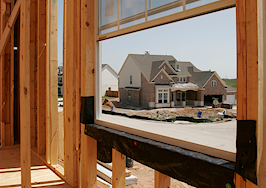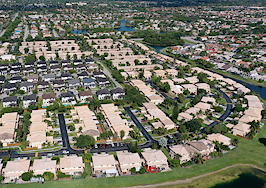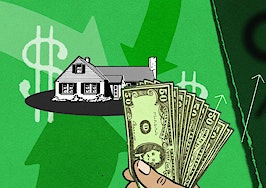In these times, double down — on your skills, on your knowledge, on you. Join us Aug. 8-10 at Inman Connect Las Vegas to lean into the shift and learn from the best. Get your ticket now for the best price.
Builder confidence rose to a key level in May after climbing for five straight months as high-interest rates put a damper on inventory for the spring real estate market, according to a new report.
That’s the highest level since July 2022, when rapidly rising interest rates began to cool both buyer demand and builder confidence, according to the National Association of Home Builders/Wells Fargo Housing Market Index.
With a lower level of existing homes for sale, buyers have pushed up demand for new homes, and builders are offering fewer incentives in the form of price cuts and others.
“New home construction is taking on an increased role in the marketplace because many homeowners with loans below current mortgage rates are electing to stay put,” said Alicia Huey, chairman of the National Association of Home Builders. “This is keeping the supply of existing homes at a very low level.”
Builder confidence for new single-family homes rose five points to 50, according to the index. The NAHB/Wells Fargo HMI weighs present single-family home sales, single-family sales for the next six months and traffic of prospective buyers. A score of 50 effectively means builders have an outlook that is no longer negative and is effectively neutral.
New homes now represent a third of all homes on the market. That’s 2.5 times higher than the historical average for the two decades leading up to COVID-19. It also sets up the likelihood that buyers will be looking at new homes in the future, according to NAHB Chief Economist Robert Dietz.
“Lack of existing inventory continues to drive buyers to new construction,” Dietz said. “With limited available housing inventory, new construction will continue to be a significant part of prospective buyers’ search in the quarters ahead.”
More than half of the builders surveyed (54 percent) were offering some type of incentive to help boost sales in May. That’s down from 59 percent in April and 62 percent in December, according to the report.
Despite the ongoing improvements indicated by the report, builders continue to face headwinds that might make it difficult to meet demand.
“These include shortages of transformers and other building materials and tightening credit conditions for residential real estate development and construction brought on by the actions of the Federal Reserve to raise interest rates,” Huey said.
The Federal Reserve has raised interest rates from 0 percent to over 5 percent in an ongoing effort to tamp down inflation.
Meanwhile, ongoing turmoil in the banking sector has led lenders to tighten their standards in recent months, making it harder for builders to find capital.















